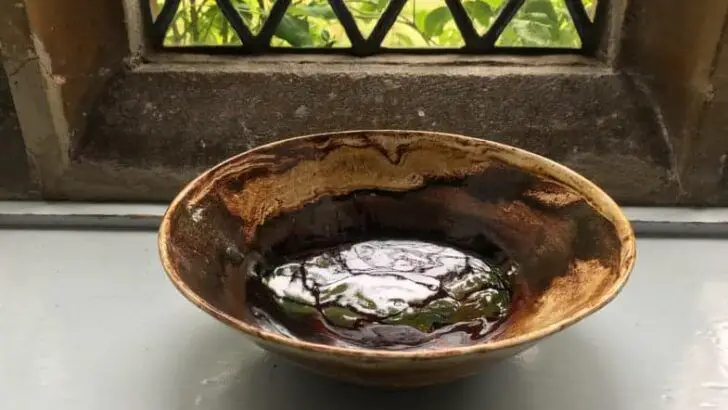Does Stain Come In Colors?
Stain is a wood finishing product that enhances the natural color and grain of wood while also protecting the surface. Stains come in a variety of colors, from natural wood tones to bright and bold hues, allowing the user to dramatically transform the look of plain, unfinished wood. Unlike paint that coats the surface, stains penetrate into the wood pores to accentuate the inherent beauty and pattern of the grain.
The main purpose of wood stain is to color and decorate bare wood while still allowing the texture and grain to show through. Stains help unify the natural variations in wood color and blend any repairs or flaws. Staining also seals and protects the wood from moisture, ultraviolet light, and other damage over time. By enriching the color, stain gives new life to worn, faded wood surfaces. Overall, stain offers an easy way to change the appearance of wood projects without completely obscuring the material and its attractive qualities.
Stain Basics
Stain is fundamentally different from paint, varnish, and polyurethane coatings in several key ways. According to Paint World, the main difference between stain and paint is that stain penetrates into the wood surface while paint sits on top of the wood as a film. Stain allows the natural texture and grain of the wood to show through, while paint obscures the underlying surface.
Unlike varnish or polyurethane, stain does not form a hard, protective coating on the surface. As explained on Woodweb, stains are designed to color and decorate wood while allowing the beauty of the natural grain to remain visible. Varnishes and polyurethanes provide a clear topcoat to protect the wood and previous stain or paint layers underneath.
In summary, stains penetrate wood and highlight the natural pattern; paints obscure the wood surface; and varnishes/polyurethanes form a protective coating over other finishes. Understanding these key differences allows proper selection and use of each type of product.
Stain Color Options
There are many standard wood stain colors available, but stains can also be custom mixed to achieve unique shades. Some of the most common pre-mixed stain colors include:
- Redwood – A rich reddish brown that enhances natural wood tones (https://woodlandcreekfurniture.com/blog/what-are-the-most-common-wood-stain-colors.html)
- Ebony – A very dark brown, nearly black stain (https://www.olympic.com/color/exterior)
- Mocha – A dark brown stain with warm reddish undertones
- Gray – Cool-toned gray staining that mutes natural wood tones
Many brands like Olympic offer custom stain color mixing services in store. This allows you to select from a wide color palette and achieve more customized shades. When mixing custom colors, it’s recommended to test on scrap wood first to ensure you get the desired tone.
Stain color can have a dramatic effect on the overall look of wood. While there are popular pre-mixed options, custom staining opens up many possibilities. With some testing and care, you can find the perfect stain color to suit your project.
How Stain Works

Wood stain contains pigments suspended in a liquid vehicle that allows the pigments to penetrate into the wood grain (1). When applied to bare wood, the stain seeps into the pores and is absorbed differently depending on the type of wood. Soft woods like pine are more porous and absorb more stain, while hard woods like oak are less porous. This allows the wood’s natural grain and texture to show through while adding rich color.
The vehicle carrying the pigments can be oil-based, water-based, lacquer-based, or a combination. Oil-based stains penetrate deeply and highlight the wood grain. Water-based stains raise the wood grain slightly and create a more uniform color. Lacquer-based stains contain dyes dissolved in lacquer and create a very even tone. Gel stains are thick for staying only on the wood’s surface.
As the stain’s carrier evaporates, the pigment is left behind in the wood pores (2). The stain color develops as the wood absorbs more or less tint. Multiple coats can intensify the color. Topcoats like polyurethane are often applied over stain to protect the finish.
Sources:
(1) https://www.tiktok.com/discover/how-wood-stain-works
(2) https://mistralmtn.blogspot.com/2013/08/wood-stain.html
Factors Affecting Stain Color
There are several key factors that affect the final color when staining wood. These include the type of wood, how it is prepared, and the number of coats applied.
The natural color of the wood has a significant impact on the end result. For example, pine will absorb stain differently than oak or maple. Softer woods like pine tend to absorb more stain, resulting in a darker color. Harder woods like oak may require extra coats to achieve the desired shade. According to Lamb’s Custom Painting, the texture and grain patterns of the wood also affect how the stain is absorbed and its final appearance.
Proper preparation is crucial for achieving consistent stain colors. The wood surface must be thoroughly sanded and cleaned prior to staining to open up the pores and remove any debris or dust. Uneven sanding can lead to blotchy areas that absorb more or less stain. Lamb’s Custom Painting recommends sanding with 220 grit or finer for best results.
The number of coats similarly impacts the depth of color. One coat of stain will produce a lighter color versus two or three coats. Sashco recommends applying thin coats of stain, allowing proper drying time between coats. Adding too much stain at once can create pooling and an uneven finish. Multiple coats are often needed to get the richest color, especially on dense hardwoods.
Achieving Consistent Color
Getting a uniform, consistent stain color can be challenging, especially on porous or uneven woods like pine, oak, ash and mahogany. There are a few techniques to help achieve more even staining:
Test samples – Always test your stain on a scrap piece first. Stain a small hidden area of your project to verify color. Different wood species and surface preparations can drastically alter stain shades.
Pre-conditioning – Using a pre-stain wood conditioner will help regulate absorption and result in a more uniform appearance. Conditioners partially seal the wood, preventing uneven penetration and blotchiness.
Proper application – Carefully follow the product directions for application methods and drying times. Applying stain evenly with the grain using a rag, foam brush or spray gun will help prevent lap marks and inconsistencies. Sand lightly between coats.
Multiple coats – For difficult woods, do multiple thin coats of stain, allowing proper drying time between applications. This slow build helps compensate for uneven absorption. Check for desired color after each coat.
Advantages of Colored Stains
One of the main benefits of using colored stains on wood is that it enhances the natural wood grain. The pigments in the stain penetrate into the wood, bringing out the natural pattern and visual texture. This allows the beauty of the raw wood to show through, rather than covering it up with opaque paint. Colored stains make the wood grain “pop” more than neutral or natural stains (https://www.readyseal.com/benefits-of-wood-stains/).
Additionally, colored stains provide a wide variety of looks for wood projects. While paint comes in set colors, stains can be mixed to produce custom colors and shades. Specialty stains are also available, like whitewashes and weathering stains, to create rustic or distressed appearances. The array of stain colors allows much more flexibility compared to paint. You can match existing wood tones or go bold with bright, saturated colors. This variety gives more options for coordinating with room décor or personalizing woodcrafts (https://www.mobilepaint.com/5-reasons-you-need-wood-stain-to-improve-your-wood-projects/).
Considerations for Choosing Colors
When selecting a stain color, there are a few key factors to consider based on your goals and needs:
Desired look – Think about the aesthetic you want to achieve. Dark stains can create a traditional, rustic look while light stains keep the natural wood tones shining through. Reddish browns provide a rich mahogany tone. Neutral grays and browns work well in both traditional and modern spaces.
Furniture use – For high-traffic pieces like kitchen tables or outdoor furniture, darker stains can hide wear and scratches better over time. Lighter stains show flaws but provide a more casual, beachy look.
Décor – Choose a stain that complements your existing color scheme and design elements. Warm wood tones pair well with reds, greens and earth tones while cool grays match with blues, purples and whites.
Test samples on spare wood to see how the stain color looks on your particular type of wood before committing. This helps avoid surprises.
Consider lighting – Stains will appear slightly different in natural vs. artificial lighting. View samples in the room where the stained piece will live.
Personal preference – While trends come and go, choose a stain color you find aesthetically pleasing and enjoyable to live with long-term.
Maintaining Stained Wood
Properly maintaining stained wood is important for preserving its beauty over time. There are a few key things to keep in mind when caring for stained wood furniture, cabinets, floors, and other surfaces.
Cleaning stained wood should be done regularly to prevent buildup of dirt, oils, and grime. Use a soft, damp cloth or sponge with mild soap and water. Avoid abrasive cleaners or scrubbing too hard, which can damage the finish. Immediately dry the wood after cleaning. Occasionally, a deeper cleaning with mineral spirits may be needed to remove tougher stains, but test a small inconspicuous area first. According to Bassett Furniture, another gentle cleaning method is to wipe the wood with a cloth dampened with a mix of white vinegar and olive oil.
Over time, stained wood may start to lose its luster and color. When this happens, reapplying the same stain can help revive the wood’s appearance. Lightly sand and prepare the surface first so the new stain absorbs evenly. Apply thin coats of stain, then wipe off excess and let it fully dry between coats. The exact stain product and application method should match the original stained finish as closely as possible. Applying a stain that is too dark or different can create an uneven, blotchy look.
In addition to cleaning and re-staining, using furniture polish and protective waxes on stained wood helps guard against scratches and watermarks. Avoid placing stained wood surfaces in direct sunlight, which can cause fading. With proper care and maintenance, the beautiful stained wood finish can last for many years.
Conclusion
In conclusion, colored stains provide a creative way to enhance wood projects and spaces. As discussed, stain comes in a wide array of colors from neutral tones to bold hues. When applied properly on the right wood type, stain allows the natural wood grain to show through while adding rich, translucent color. Factors like surface preparation, number of coats, and topcoat choices impact the final stain color.
Colored stains present unique advantages over paints and opaque stains by allowing the beauty of the wood to shine through. While careful prep work is required, the ability to directly infuse color into the wood grain gives stained wood a depth and richness that can’t be achieved with solid coats of paint. Whether matching a color scheme or making a bold statement, stain offers creative freedom in wood projects.
In summary, stain unlocks a spectrum of colorful possibilities while maintaining the natural essence of wood. With the right prep work and application techniques, stained wood can become a vibrant showpiece in any space.



